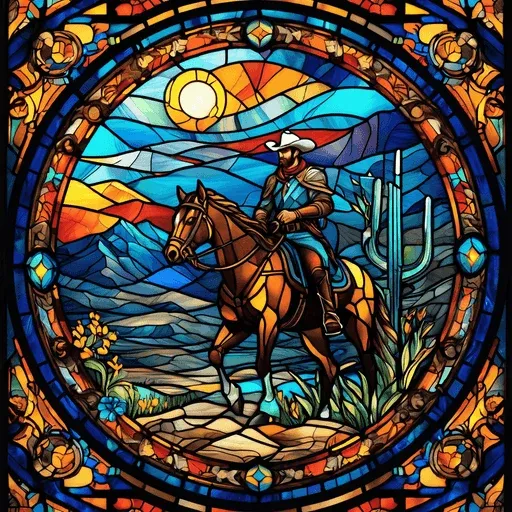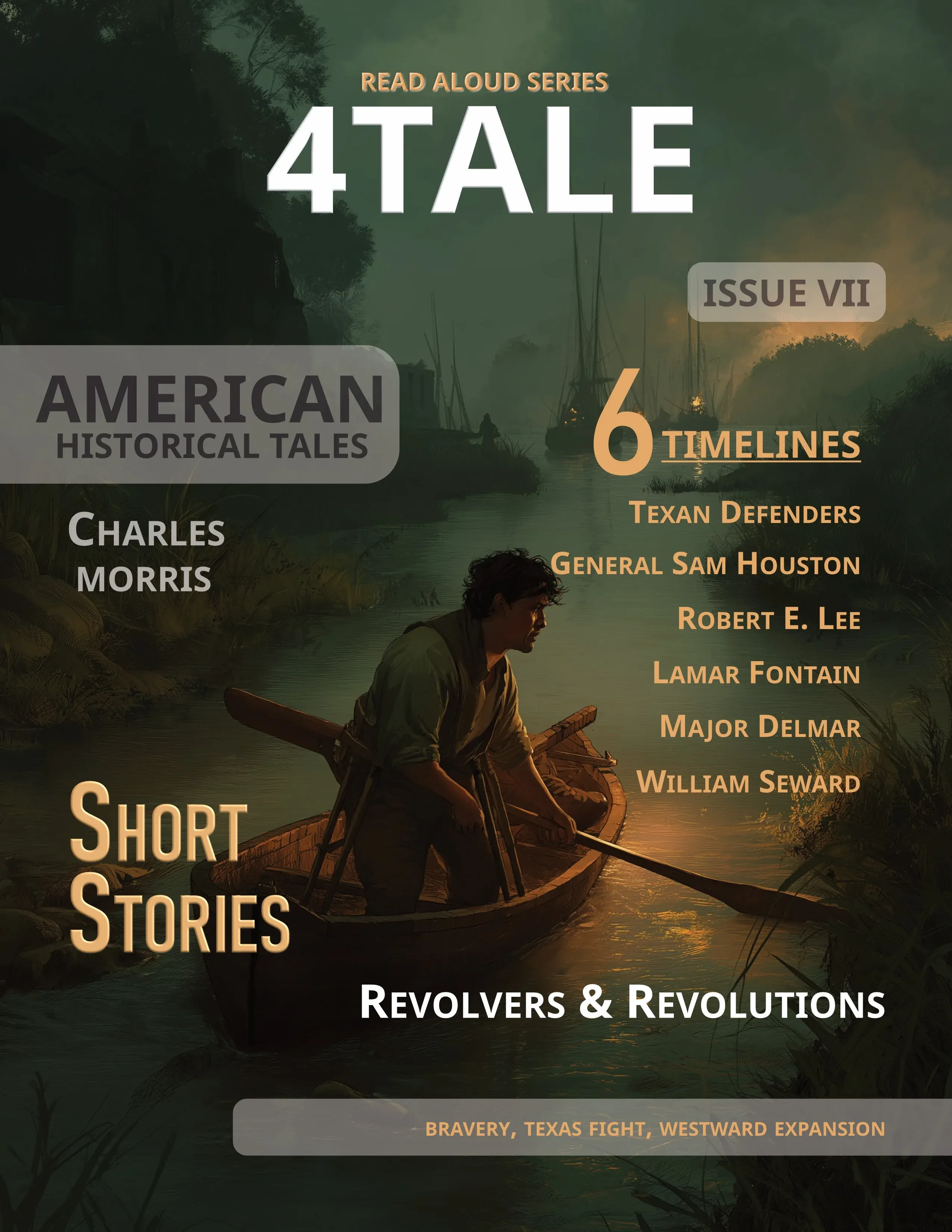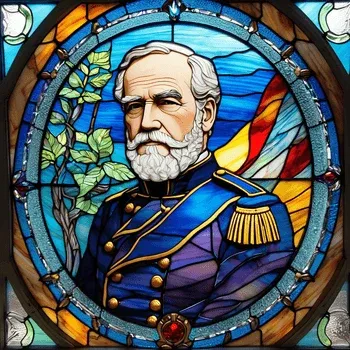BY CHARLES MORRIS
How Houston won Freedom for Texas
Historical Tales 2 American: Story 23 of 34

Heading

General Sam Houston: Sam Houston was the leader of the Texan revolt. Despite having only four hundred men initially and facing widespread panic and retreat among settlers, he managed to maintain a fighting force.
Santa Anna's Capture: The day after the battle, Texan cavalry captured Santa Anna, who was hiding and disguised as a common soldier. His capture was pivotal, as he was the President of Mexico.
A good book we like, we explorers. That is our best amusement, and our best time killer
- Roald Amundsen, Explorer
Triumph at San Jacinto: How the Alamo Catalyzed the Independence of Texas
The tale of Texas' struggle for independence is as sprawling and epic as the state itself, marked by heroic sacrifices, strategic retreats, and a climactic battle that forever changed the trajectory of a nascent nation. In this narrative, we delve into the transformative power of the Alamo and its aftermath, culminating in the spectacular triumph at San Jacinto. Through this engaging journey, you will comprehend how a lone star rose from the ashes of defeat to embody a republic's resilient spirit.
The Unfinished Tale of the Alamo
The saga of the Alamo is far from a tale of defeat. It stands as a symbol of resistance and spirit, a rallying cry for those who sought freedom from the shackles of oppression. It was not merely the loss of Travis and his brave men that stirred the hearts of the Texan patriots, but the bloodshed of over four hundred defenders at Goliad. Led by Colonel Fannin, these men were betrayed by the false promises of protection from Santa Anna's Mexican soldiers. This massacre served as a stark reminder of the tyranny they were fighting against, and seeded the beginnings of vengeance and rebellion in the hearts of the Texans.
Santa Anna's False Victory
Santa Anna, the President of Mexico, believed his conquest to be complete. He had successfully killed two hundred men at the Alamo and mercilessly massacred four hundred more at Goliad. He was under the mistaken impression that he had snuffed out the spark of rebellion, when in reality, his actions had only kindled the fire of Texan independence. Little did he know, he had not yet faced the real threat - Sam Houston, who would lead the Texans towards their long-cherished dream of freedom.
Podcast
Sam Houston: The Unseen Threat
In the midst of panic and an overpowering Mexican advance, Houston, the leader of the Texan revolt, retreated strategically. He was not fleeing from the enemy, but biding his time, waiting for the perfect moment to strike back. He bolstered his army to over seven hundred men and strategically positioned them by Buffalo Bayou, a deep and narrow stream flowing into the San Jacinto River. Facing a Mexican force far superior in numbers, Houston motivated his men with the war-cry "Remember the Alamo!", a poignant reminder of their fallen comrades and the cause they were fighting for.
The Surprise Attack at Buffalo Bayou
The pivotal moment of the Texas Revolution transpired at Buffalo Bayou. Armed with fiery determination and the battle cry, "Remember the Alamo," Houston's men were ready for a surprise attack. The Mexican troops, accustomed to their supposed superiority and convinced of the Texans' imminent defeat, were oblivious to the impending storm.
Houston's strategic retreat was, in fact, a tactical move to consolidate his forces and plan an audacious assault that would turn the tides of the revolution. The Texans, shouting "Remember the Alamo! Remember Goliad!" charged at the Mexican troops, engaging in fierce hand-to-hand combat. This unexpected attack sent shockwaves through the Mexican ranks, forcing them to flee in disarray.

The Aftermath: The Fall of the Mexican Army
The Battle of San Jacinto, although brief, was a brutal show of the Texans' resolve. Lasting less than an hour, it resulted in a significant victory for the Texan forces. The Mexicans, thrown into a state of panic, abandoned their positions, leaving behind their artillery and personal belongings.
The Texans, relentless in their pursuit, chased down the fleeing Mexicans until nightfall. The casualties were heavily one-sided, with only seven Texans killed and twenty-three wounded, while the Mexican forces suffered six hundred and thirty casualties and seven hundred and thirty taken as prisoners. This devastating defeat marked the fall of the Mexican Army and the beginning of a new chapter in Texas' history.
The Capture of Santa Anna and the Independence of Texas
Perhaps the most significant event during the aftermath of the battle was the capture of Santa Anna. Though he tried to disguise himself as a private soldier, he was soon recognized by his fellow Mexicans who acknowledged him as "El Presidente." Despite his pleas for mercy, Houston chose to spare his life, a decision that would have far-reaching consequences.
Santa Anna's capture was more than just a military victory. It symbolized the end of Mexican rule in Texas and the birth of a new, independent republic. The Lone Star Republic, as it came to be known, was born out of the ashes of the Alamo and Goliad, its independence forged in the crucible of the San Jacinto battle. The Texans' victory was a testament to their resilience, their fierce desire for self-governance, and their unyielding spirit. With Santa Anna's capture, the independence of Texas was finally secured.
Conclusion
The triumph at San Jacinto serves as a testament to the indomitable spirit of Texas. Through the ashes of the Alamo and the bloodshed of Goliad, a republic was born, personified in the resilient figure of Sam Houston. Aided by strategic retreats, surprise attacks, and unyielding determination, Texas emerged victorious, forever altering the course of its destiny. This narrative stands as a symbol of sacrifice, resilience, and a resolute thirst for independence, encapsulating the essence of the Lone Star Republic.





